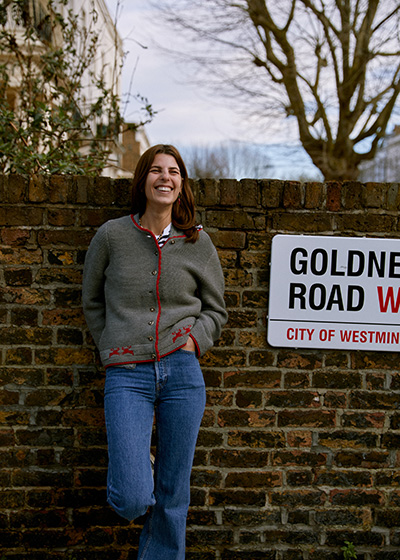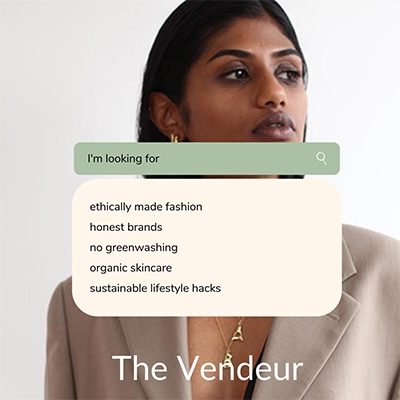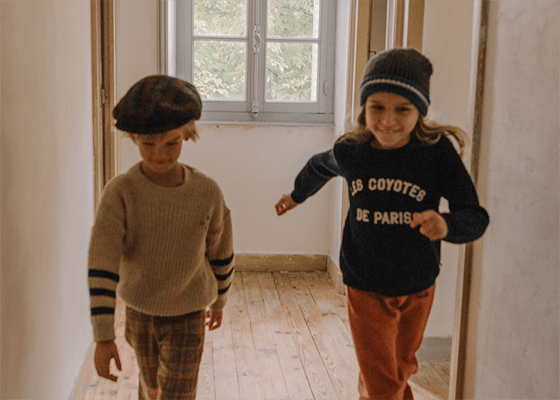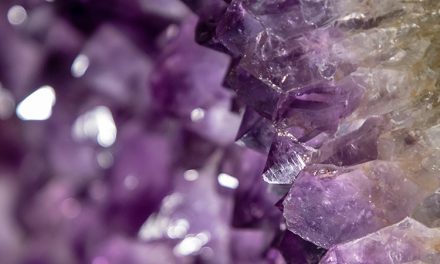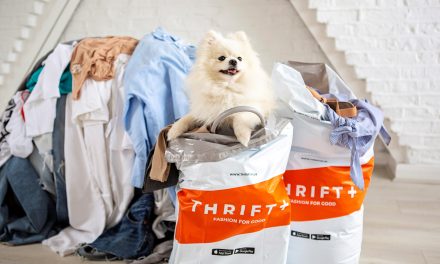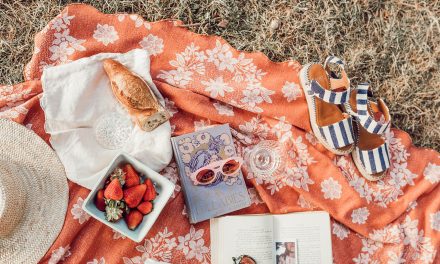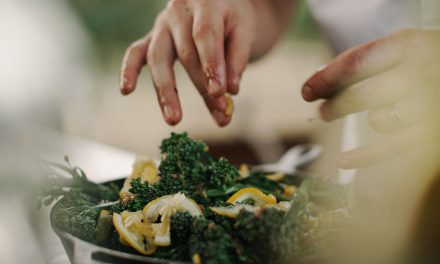10 Questions for Kids O’Clock Founder Laura Roso Vidrequin
Image: Kids O’Clock
Children go through a lot of clothing, so why are the options for buying preloved clothing for them so limited? We asked Kids O’Clock Founder Laura Roso Vidrequin 10 Questions about sustainable kidswear and creating community.
We all want the best for our kids, but let’s face it, the childrenswear market is flooded. Not just with brands, but with products. Between the ages of 0-3 years, kids get through around 8-10 sizes. This means that approximately 90% of their wardrobe is rarely used, sometimes untouched. When we consider the huge waste problem that exists in fashion, it would be ridiculous to ignore childrenswear as a contributing factor. Someone who couldn’t ignore it was Laura Roso Vidrequin. Having worked in fashion buying, she was frustrated at the lack of options for purchasing second hand clothing for her son. With so much kidswear being produced and eventually discarded, why was this the case?
Kids O’Clock is Laura’s answer to every stylish bambino’s wardrobe quandary. The website itself is slick, not unlike resale giant Vestiaire Collective. The product offering is beautiful, aspirational, but most importantly price accessible. Laura has democratised kidswear for those on a tighter budget, and made it easier to extend the life cycle of garments that might otherwise end up in the bin. Through the community that now exists there, Kids O’Clock are furthering the conversation around consumption and reuse, blasting the stigma around preloved clothing. Brand partnerships are the latest project, allowing customers to drop off clothes in store in exchange for vouchers. We spoke to Laura to find out more about the beginnings of Kid’s O’Clock and why it takes a village to raise not only a child, but a childrenswear company too.
The Vendeur: What was the inspiration behind Kids O’Clock?
Laura Roso Vidrequin: I had been a fashion buyer for 10 years when I had my first son, Albert. As a buyer, I had been lucky enough to work at very strong companies that would always push the retail concept a little bit further (Moda Operandi, Style.com, Net a Porter, etc). After a deep dive into the children’s clothing market, I realised the potential and decided to use my skill-set and 10 years of buying experience to launch a business within childrenswear. As a young parent, I thought it was very interesting that I could not find the right platform to sell and buy pre-loved clothing for my child. I am someone who shops mostly vintage or second-hand, and I try to go plastic-free as much as possible. It was quite organic to address this issue myself and create a safe platform where parents can go to share and make a conscious effort to reduce their carbon footprint.
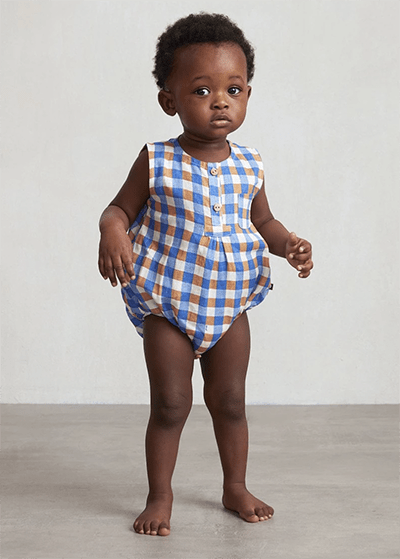
Image: Oeuf NYC
TV: How did your experience as a fashion buyer help you when starting Kids O’Clock?
LRV: Being a fashion buyer has really helped because of the data and analytical component involved. Before launching, I knew I needed to research the market behaviours and the kidswear industry’s data. I learnt how to analyse, how to come up with strategic decisions to fix a situation, and how to constantly reach higher goals. From my 10-year buying career, I have picked up key skills that I use day in and day out with Kids O’Clock. Things such as trend forecasting and finding solutions to problems that are both big or small. As well as reading numbers, the ability to handle products comfortably, and the ability to work my way through every department to make sure the business is running smoothly.
TV: Why is it important to keep clothing in circulation for as long as possible?
LRV: A baby will wear approximately 200 pieces of clothing in their first few years. However 80% of a child’s wardrobe is only worn a few handful of times as they go through multiple sizes so quickly in their first few years. It is arguably the sector that accounts for the largest amount of clothing and textile waste. It’s a problem I am hoping to provide a sustainable solution to. As humans, the best thing we can do is buy less and reuse more. If everyone bought just one used item instead of new this year, it would have a huge collective and positive impact on the planet. This is why it is so important to keep clothing in circulation for as long as possible. With circular fashion, products should last in the ecosystem for a long time with no significant waste. My dream is to see all retailers working together to evolve the retail industry to a future where every material is used and reused safely. One where ecosystems are protected, and this is why the brand partnerships we are coordinating between Kids O’Clock and other retailers are so important. We want to keep the circular clothing revolution going no matter where you shop.
Enjoying this article?
Then you'll love our Newsletters. At the beginning of each month, we send you the low down for the month ahead, featuring news and our favourite responsible products and brands you need to know about. And whats more, you receive all of this direct to your inbox before anyone else.
TV: When you started you relied on trust and honesty within your community to help grow your stock levels for resale, how does transparency play a part in Kids O’Clock growth?
LRV: Transparency plays a huge part in our growth. Luckily, when it comes to supply, we have rarely received any stained or poor-conditioned items. We have strict guidelines on the website outlining the condition and quality of products that we are willing to accept to resell. We are lucky that the parents in our community take this very seriously. I believe the customer who shops at Kids O’Clock understands that it is a cost burden to a growing start-up like us to send items in bad condition that cannot be resold. I also think as parents we realise the importance of having a trusted source for pre-loved clothing. Our customers are very conscious of what they choose to upload to sell on the website based on what they would want to buy themselves in terms of condition and quality.
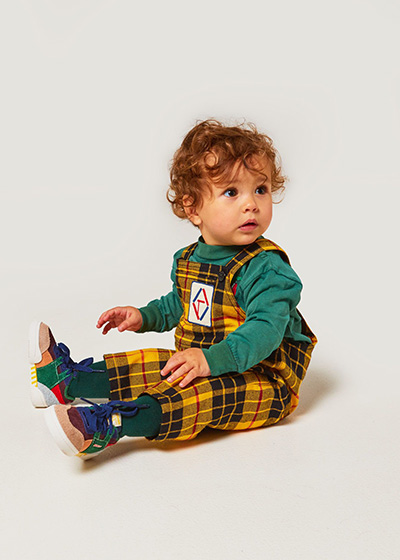
Image: The Animal Observatory
TV: Resale is a big opportunity within the fashion industry right now, why do you think that options are lacking for childrenswear, arguably the sector that needs it the most?
LRV: I don’t believe there have been many changes regarding resale within children’s garments in the last few years. I have seen strong brands promoting seasonless garments, or “organic” production, but I personally don’t think this is enough. I don’t claim to be an expert on sustainability, I am just an experienced buyer and a mom living in a city where I am exposed to a lot of cool brands. I think the bigger and well known brands should be leading the way and acting as the example for others to follow. They should be more proactive in their approach because there is still a lot of work to do in this industry.
I have seen many companies use terms like; “organic”, and “sustainable” as a way to position themselves at the center of the environmental conversations within the fashion industry. I think that we have to be cautious in the way we use those terms. A marketing tool should not be used by a brand/retailer unless it is an actual adjective of their mission. However, I do think the fashion industry has already changed since the beginning of this pandemic. The way everyone is having to speak on the issue is great because it will be environmentally impactful and force everyone to take a look at their own habits and practices. It has to start somewhere, brands need to show a more responsible way, but consumers should too. They should refuse to purchase when there is a lack of transparency in the production chain, or focus their spending on something more sustainable. Again, this is why we want to evolve our partnership programme at Kids O’Clock to work with as many of the big fashion brands and department stores as possible. This way we can implement a change and encourage new customers to recycle and buy pre-owned where possible.
TV: Do you think there has been an increase in parents considering their carbon footprint?
LRV: I first started Kids O’clock with 10 moms who trusted me. Today, our community has grown to over 500 active members across 14 countries, and a combined following of 28,000 on social media who are loyal, engaged and interested in our content and messaging. The number goes up everyday too, so I definitely see an increase in parents considering their carbon footprint simply based on the interest I have seen in Kids O’Clock. I have also noticed that people are covering the topic of circular economy platforms for childrenswear more in terms of journalism too. Therefore people must be interested in reading about the subject and educating themselves to learn more.
TV: How does community play a part in increasing awareness around the subject of over consumption?
LRV: Kids O’Clock was created on the basis that kids’ clothing should be worn more than once, but also, built on a trustful community of parents. Community is a huge part of what we are building at Kids O’Clock and it plays a big part in increasing awareness around the subject of over consumption. We often give parents around the world (with a built up social media following) the opportunity to takeover our social media platform and introduce their followers to what we do. It’s a great educational tool to get more people on board to join the community via trustworthy messaging and word of mouth recommendations. We want these people to tell their audiences, in an organic way, that there is no need for overconsumption. You can find almost everything you need pre-loved with huge environmental benefits, and for cheaper than RRP too. There is always someone who will have the same idea as you in terms of the clothing or silhouettes you want to choose for your children to wear; we are simply bringing you all together via the platform. What makes us stand out from the crowd is our strong eye for product curation, something that helps parents understand we are an honest, trustworthy and safe online community. We won’t encourage over consumption but simply encourage parents to continue shopping for the items they want to buy for their children from a selection of wonderful pre-loved items.
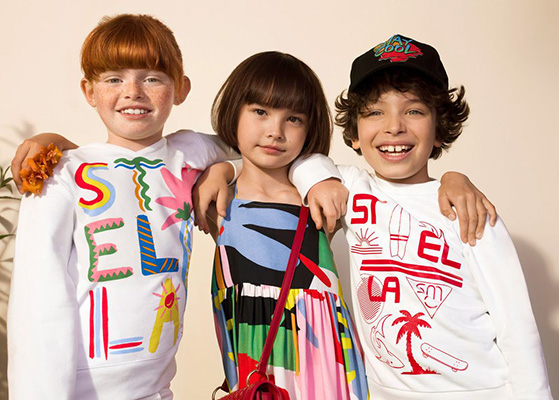
TV: Apart from reselling old clothes, how else do you encourage parents to be more eco aware in their purchasing habits?
LRV: No one can do it all and starting small but being consistent is already a big win. I encourage people to change their food shopping habits because for me, this is the easiest way to connect to a better world. Shop local and make sure you use the contents of your entire fridge before replenishing. I also encourage my community to do little things that are part of their day-to-day routine such as using refillable bottles and soap bars rather than buying big bottles that use a lot of packaging. Lastly, simply cooking a home cooked meal is a very small step to be aware of purchasing habits and maximising everything you already own to its fullest potential. I made it a point when my son was born to not consume anything out of plastic containers, so instead I make all of his food a week in advance and freeze them.
TV: How important is it that Kids O’Clock is seen as a kidswear shopping destination?
LRV: I want Kids O’Clock to become the official platform for parents to exchange, and share toys, clothes and baby gear. The pre-loved ecosystem has been growing and moving very rapidly over the course of the years, but only a few players will remain. It is about being flexible, fast, and as long as we’re concerned, constantly questioning and perfecting our product. It is very important to be seen as a kidswear shopping destination, but we are also much more than that. We are a trustworthy community of parents online sharing tips and advice, in a relatable and organic way. We want to better the ecosystem of the world and work with other brands to share the same mentality, and to ultimately reach the goal quicker.
Did This Put A Smile On Your Face? Why Not Subscribe?
If you enjoyed this then theres plenty more on our email newsletters that you'll love. Whether you're a sustainable newbie or an eco conscious pro, our bi monthly emails will inspire you to live sustainably and ethically.
Disclaimer: The people and models in the images featured are not associated with The Vendeur and do not endorse it or the products shown. This post may contain affiliate links. Prices correct at time of publishing.

